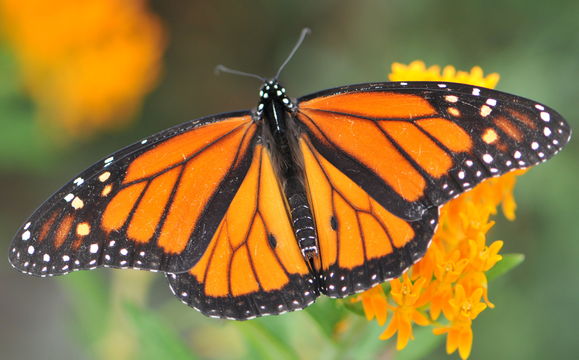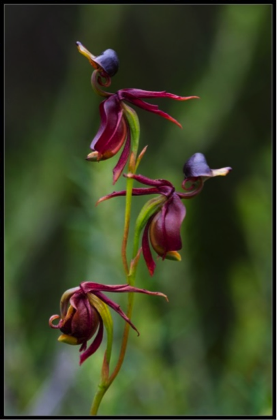Oblivious Insects and Devious Orchids
Bees are known to be highly intelligent creatures, but in a way, they are entirely oblivious. Buzzing among plants, a bee searches for pools of nectar to eat, slurping the stuff out of flower centers. But while carrying out this humdrum foraging routine, the bee inadvertently acts as a transport mechanism vital to hundreds of organisms. In making its way into plants' nectar repositories, a bee brushes past the flower parts that produce pollen. Sticky granules lodge among hairs on the insect's hind legs; the bee takes off with these miniscule stowaways attached. As it buzzes across a field or through a garden, the pollen falls off the bee and lands in flowers. Each time a bee lands, it gathers new pollen from more flowers. Because the transfer of pollen from one flower's male organ to the female organ of another plant is the first step in reproduction, without pollinators to carry their cargo, more than 75% of flowering plants on Earth would not survive. Bees are by no means the only critters fit for this job. Other pollinators are butterflies, beetles, and moths, as well as birds and bats. Sometimes even lemurs or geckos spread pollen.

The monarch butterfly, Danaus plexippus, is one kind of pollinator. Image courtesy of eol.com
Most of the time, the relationship between flowering plants and their pollinators is mutually beneficial: the plants provide the critters with food, and the critters act as a shipping service for the immobile plants. But sometimes one party loses out. An especially devious family of plants --the Orchidaceae family, known to us as orchids -- has evolved a way to trick pollinators into helping them reproduce without getting anything in return themselves. Some of these orchids trick male insects by making themselves appear to be females of the same species. Their deceit is impressively elaborate: by patterning themselves with certain colors, making their petals the right texture, and releasing specific pheromones, they make themselves look, feel, and smell like female insects. Male pollinators are haplessly attracted to these frauds: they land on the orchids and try to mate with them. Instead of finding a female, they may find themselves pinned upside down or sliding into a pit of pollen. They climb out of the flower disgruntled, disappointed, and -- as the plant planned -- covered in pollen.

The Australian Flying Duck Orchid lures in insects and then pins them upside down before they can escape. Photo by Bill Higham.
Orchids have developed many and varied methods of trickery designed to dupe their insect pollinators. Aspects of these systems still perplex scientists. One basic question that is still a matter of investigation is why the orchids bother with deception at all, given that producing a small amount of nectar to attract insects would require little extra energy.
Orchids and their pollinators are the focus of this year's Pollinator Week, which aims to recognize pollinators and spread awareness of both their roles and the perils they face in the age of pesticides and reduced habitat space. The National Museum of Natural History is hosting events for Pollinator Week, including a Twitter chat about how you can support a healthy ecosystem on Friday, June 20, 1-2pm ET. To participate in the chat, use the hashtag #SIpollinator.
Check out the #PollinatorWeek events here: https://twitter.com/NMNH
